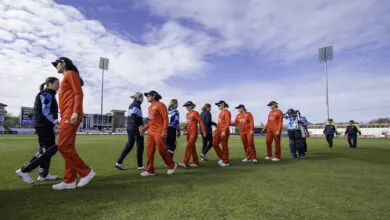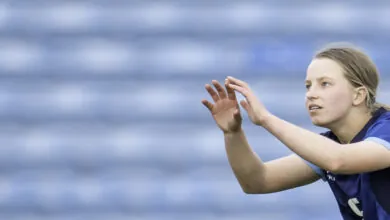Warwickshire became a first-class county in 1894, when it played its first game against Yorkshire, and entered the County Championship in the following season. Paul Dyson looks back at an exciting match which took place not long after the Second World War.
August 20, 21, 22, 1947 at Headingley: Yorkshire 314 (H Halliday 97, W Watson 68, AB Sellers 66, WE Hollies 5-72) & 175-6dec (AB Sellers 55, CW Grove 4-59); Warwickshire 229 (HE Dollery 94, JR Thompson 73, A Coxon 5-50) & 254 (KA Taylor 68, A Coxon 4-30). Yorkshire won by six runs.
Yorkshire had won the County Championship in 1946, the first season after the hostilities, but Warwickshire had finished in 14th position. Each county would play 26 matches in 1947; before this match Yorkshire had won six and lost seven of their first 22 games while their opponents had won six and lost nine of their 23.
Brian Sellers, who had been leading Yorkshire since 1933, won the toss, chose to bat and watched his top order lay the foundations of a solid total. The highlight was a third-wicket stand of 133 between opener Harry Halliday (97, a career-best) and Willie Watson (68) who both fell within four runs of each other; three wickets went down in four balls to leave the scoreboard showing 205 for six. Sellers then played an enterprising innings and the last four wickets added 109, despite the leg-spin of Eric Hollies who had taken two top-order wickets and finished with five for 72. Yorkshire were all out for 314 and the visitors reached nine for no loss by close of play.
Warwickshire started the second day by suffering an early collapse; two wickets fell with the score on 14, both to Alec Coxon, and though John Thompson was batting fluently a third fell with the score on 44. Thompson was then joined by ‘Tom’ Dollery and the pair put on 90 together before Thompson was bowled for 73 and another wicket went down one run later to make the score 135 for five. Dollery held most of the rest of the innings together but did not receive a great deal of support and finished six runs short of a century, although he had completed 10,000 runs in first-class cricket in the process. Coxon continued to bowl well and he finished with five for 50, Warwickshire conceding a lead of 85. Yorkshire then had time to start their quest to make a challenging target but each of the top four batsmen were out for a score from 19 to 35; changes to the middle order did not work and the hosts found themselves on 99 for six, four of these falling to the medium-fast bowling of Charlie Grove. It was then that Sellers began playing his second important and fighting innings of the game and, in the company of Ron Aspinall, took his side to 140 for six by close of play.
The seventh-wicket pair added a further 35 at the start of the third and final day before a declaration which set Warwickshire to make 261 in four hours. Aspinall took two early wickets and at 89 for five the visitors were facing defeat. Ken Taylor was batting well, however, and when he was joined by skipper Peter Cranmer, later a noted commentator on cricket and rugby, the pair added 62 together. Taylor batted for three-and-a-half hours for his 68 and his support from further solid batting from the lower middle order not only continued to bolster the score but also kept his team up with the required run-rate. However, the ninth wicket fell with 33 still wanted for victory and the writing seemed to be on the cards. The final pair of Tom Pritchard and Vic Cannings had other ideas, though, and edged ever closer to the target. With three minutes remaining before the 4.45 finish (both counties had to travel to the midlands) it was Coxon who had the final word and he clean-bowled Pritchard for his ninth wicket of the match to give his side victory by just six runs.
It was a match, according to Wisden ‘marked by good bowling and very smart fielding’. However, for different reasons, both counties will have been disappointed with their seasons. Yorkshire slipped from first to eighth and Warwickshire from 14th to 15th.
Man of the Match
The 1947 season was significant for Alec Coxon in that it included him being awarded his county cap. He was one of six players to receive the honour in that year as the county was undertaking its rebuilding process following the Second World War.







